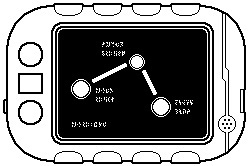Technology level 3
Technology level 3 is the fourth of the Technology level classifications. The defining characteristics of a society having reached TL–3 is industrialization. The development of the external combustion engine, a steam engine, combined with the ability to use machines to work metal and other materials drives all manner of new industries of mass production and manufacturing.
The availability of new power sources for mass production and transportation drives an enormous shift in cultures. Rarely is this transition easy or quiet.
In terms of classification TL–3 is the Technological Period of Ur-Tech, the initial planetary bound cycle of development. It also occurs within the Technological Epoch know as the Tool Making Epoch.
- This is typified by Terra circa -2719, when the world reached the apex of TL-3 development.
Theoretical Technologies[edit]
- Physical Science
- Laws of motion
- Engineering by math
- Material Science / Manufacturing
- Steel as structural material - Large scale production of steel allow use as a structural material for railroads, ship building, and structures.
- Biological Science
- Theory of evolution
- Germ theory of disease - A fundamental understanding of how to treat and prevent diseases.
- Cultural Science
- Democracy - The idea of people being able to decided both who will rule them, and the laws under which they will live.
Quality of Life Technologies[edit]
- Energy
- Steam engines - An external combustion engine.
- Primitive batteries - Chemistry to produce electricity.
- Information
- Newspapers - Wide spread printed news and information.
- Libraries - Collections of books cataloged for easy retrieval
- Communications
- Photography - Chemistry to permanently capture images
- Telegraphy - Use of electricity to transmit information over copper lines.
- Medicine / Life sciences
- Surgery -
- Environment
- Cement structures - The ability to construct reinforced concrete structures of impressive size, including buildings, dams, and other constructions.
Transportation Technologies[edit]
- Land transportation
- Extensive roads - The desire for transportation over land drive the ability to construct road for smoother travel.
- Railroads - The construction of steam powered trains running on steel rails.
- Water
- Steam powered ships
- Air
- Hot air balloons
Military Technologies[edit]
Weapon developments are largely refinements of TL–2 designs, including such features as rifled barrels and elongated projectiles for accuracy and ballistic performance, early experimentation with impact-sensitive compounds as propellant igniters, very crude telescopic sights, and repeating weapons such as revolvers.
By the latter half of this period, almost every soldier would have had a rifled, single-shot, muzzle-loading weapon with a detachable bayonet for melee use if there was insufficient time to reload. Artillery science was slightly more advanced, and crude exploding projectiles were in use by the end of tech level 3. These projectiles were occasionally seen but were generally inaccurate. They had the advantage of being able to carry a long-range explosive payload without the recoil and mass of a regular cannon.[1]
See Also[edit]
Technology levels[edit]
References & Contributors[edit]
- Marc Miller. Worlds and Adventures (Game Designers Workshop, 1977), 7-8, 14-15,17.
- Marc Miller. Scouts (Game Designers Workshop, 1983), 26.
- Marc Miller. Merchant Prince (Game Designers Workshop, 1985), 34,37.
- Herb Petro. "Tech Level Expansion." Imperium Staple 07 (1986): 3.
- Loren Wiseman. "Twisting Tech Levels: A Traveller Variant." Challenge 31 (1987): 27.
- Marc Miller. Referee's Companion (Game Designers Workshop, 1988), 26-34.
- Geir Lanesskog. World Builder's Handbook (Mongoose Publishing, 2023), 58,83-86.Joe Fugate, J. Andrew Keith, Gary L. Thomas. World Builder's Handbook (Digest Group Publications, 1989), 58,83-86.
- Frank Chadwick, Dave Nilsen. Fire, Fusion, & Steel (Game Designers Workshop, 1994), 6-8,37.
- Greg Porter. Emperor's Arsenal (Imperium Games, 1997), .
- David Burden. Pocket Empires (Imperium Games, 1997), 51-52,108.
- Leighton Piper. "Low Tech." Signal-GK 13 (1997): 30-31.
- Jon F. Zeigler. First In (Steve Jackson Games, 1999), 94-95, 108-117.7
- K. David Ladage, "Alternate Technological Paths", JTAS Online (2001)
- K. David Ladage, "Alternate Technologies II: Relativity", JTAS Online (2001)
- Martin Dougherty, Hunter Gordon. The Traveller's Handbook (QuikLink Interactive, 2002), 378.
- Ken Pick, "An Analysis of Tech Levels", Freelance Traveller 012 (2010): 10-12
- Marc Miller. T5 Core Rules (Far Future Enterprises, 2013), 502-507.
- Marc Miller, Robert Eaglestone, Don McKinney. Starships (Far Future Enterprises, 2019), 223-237.
- Marc Miller, Robert Eaglestone, Don McKinney. Worlds and Adventures (Far Future Enterprises, 2019), 19.
- ↑ Greg Porter. Emperor's Arsenal (Imperium Games, 1997), 23.
